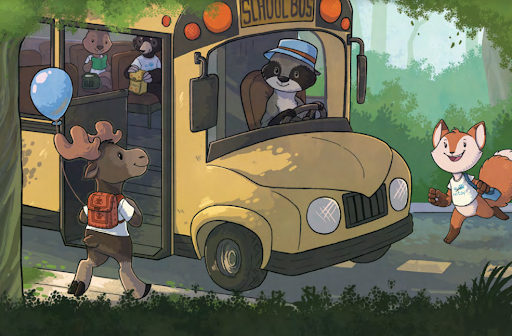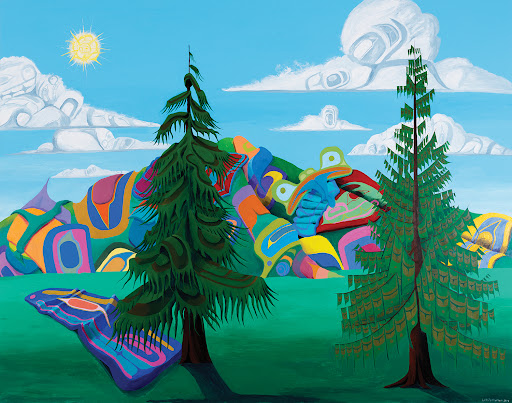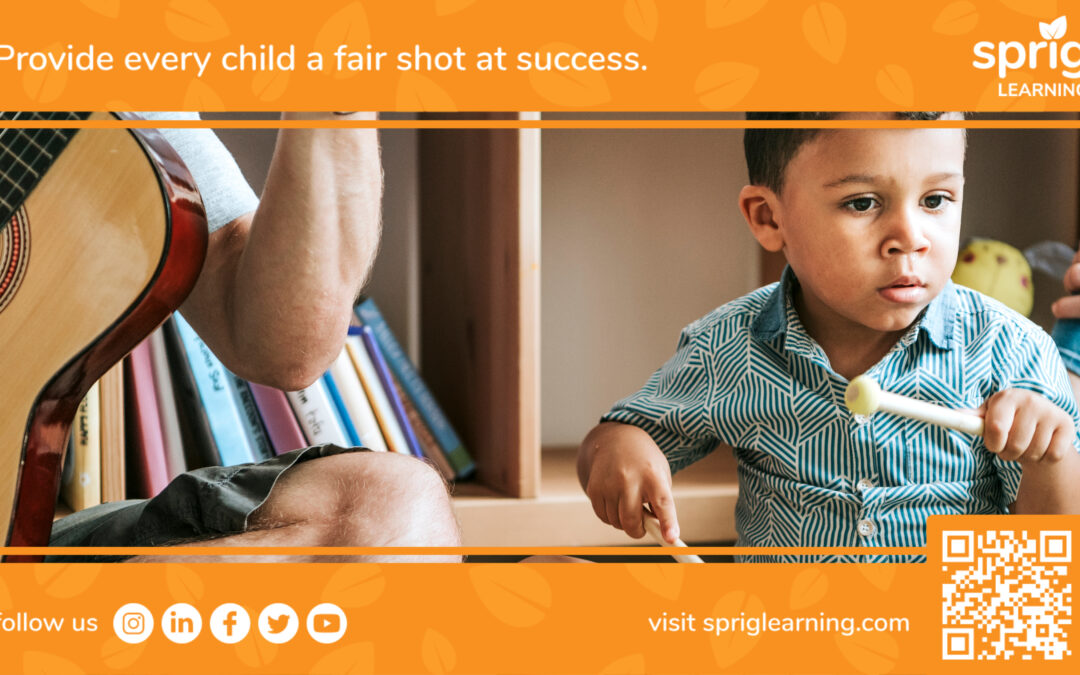Sprig Learning writes the Root to Fruit newsletter twice a month, covering all the latest news from early learning pertaining to projects, practices, announcements and educational equity.
The 30th edition was sent out to readers yesterday. The last edition of the year will go out to subscribers on December 21. Subscribe now to be in the loop on all things early learning.
In every Root to Fruit, educational equity has a separate section devoted to it, as so much of what Sprig is trying to do centers around raising equity in education.
The educational equity section features stories on the gaps between different groups of students due to their own unique circumstances. It highlights stories that speak of this gap, and the efforts that are conceived and actions that are taken to reduce this gap.
In particular, Sprig Learning centers its work around the persistent gaps for Indigenous learners. It is not only additional resources that are often needed to provide high-quality early learning, but support for the autonomy for Indigenous communities to preserve local customs, languages and cultures.
This article presents 15 stories of revitalizing Indigenous education first featured on Root to Fruit, since the beginning of the last school year.
Stories of Indigenous Education Revitalization

1. The Anishinabek Nation: Introduction of Teaching Tools for Topics Such as Treaty Education
Nov. 1-7 was Treaties Recognition Week in Canada. School boards across the country took this opportunity to continue their education on Indigenous subject matters, with relevant sessions about what a Treaty is and what reconciliation looks like. The Anishinabek Nation unveiled some new online teaching tools. The recommendation is that lessons about Treaties should begin in elementary school. Sprig has helped support the development of such lesson plans.
2. Vancouver Island First Nation: Ability to Certify Own Teachers
Vancouver Island First Nation has accepted the education jurisdiction agreement and law-making protocol with the Government of Canada. This allows Cowichan Tribes to certify its own teachers, determine graduation certification and create its own curriculum. Marlene Tommy, a kindergarten and grade one teacher, says that students can “expect a more robust cultural education.”
3. Mississaugas of the Credit First Nation: Expansion of Space to Promote Holistic Approach to Learning
The Mississaugas of the Credit First Nation are expanding Lloyd S. King elementary school. New classrooms will be added and local early learning centres will be brought under the same facility to establish the First Nation holistic approach to lifelong learning. The school principal and Chief say that this will provide a healthy and safe learning environment and promote the further development of a culturally-relevant curriculum.
4.The Rapid City Area Schools: Introduce of Immersion Programs to Rapidly Learn an Indigenous Language
Lakota Immersion pilot program is finding great success in Rapid City in South Dakota, a year after its launch.The Rapid City Area Schools are getting familiar with the program and are noticing instances of children learning much more quickly, whether it be in math, reading or the Lakota culture. Teachers say they learned a lot about language acquisition in kindergarten and the goal is for the program to expand by one grade level every year. Next year’s kindergarten program is at capacity at 20 students.
5. Leo Ussak School: Creating the Right Learning Environment
Appolina Makkigak is one of the three recipients of the 2022 Inuit Language Award. A Grade 1 Inuktitut teacher at Leo Ussak School in Rankin Inlet, Appolina has been teaching for the past 5 years, and has innovated every year to keep the learning materials relevant. She has an Inuktitut word wall and speaks to her students about Inuit traditions.
6. Great Falls Public Schools: Incorporating Hands-on Activities To Preserve Culture
Great Falls Public Schools (GFPS) in Montana are looking to teach students about Indigenous culture through innovative programs. Using donation funds from the non-profit organization Sisters United, GFPS aims to offer cultural opportunities such as planting sweetgrass, going bison hunting, and hearing stories from elders. GFPS Director of Indigenous Education Dugan Coburn says that this will be a great way to represent the 51 different tribes in the Great Falls community.
7. Sagamok Anishnawbek First Nation: Building Schools in Close Proximity to Relevant Cultural Centres
A new elementary school was approved in Sagamok that will accommodate 201 students and be equipped with a gym, cafeteria, sciency room and library. The school site is located next to an Elder’s Lodge, so there will be more exposure to the Ojibwe language.
Chief Alan Ozawanimiki says that the community’s future depends on “promoting an environment conducive to learning in a way that reflects both modern curriculum and Anishnawbe Aadziwin”. This is great news for the Sagamok Anishnawbek First Nation in Ontario, as there will be more opportunities to strengthen relationships and build language.
8. The Mohegan Tribe: Creating a Stockpile of Resources to Teach Lesson Plans in New Curriculums
The Mohegan Tribe in Connecticut is set to launch the Educators Project, which is an Indigenous curriculum produced by the Mohegan Council of Elders and the tribe’s Cultural & Community Programs and Communications departments. Connecticut has mandated that starting with the 2023-2024 school year, each local and regional school board should focus on including Indigenous studies in the curriculum. Teacher resources, video assets and student tools are being developed to teach the different lesson plans in the curriculum.
9. The Kainai Board of Education: Providing Opportunities for Teacher Collaboration
The Kainai Board of Education is building a new elementary school. Students will be learning the Alberta curriculum as well as the Blackfoot language and Indigenous history and culture. The new Aahsaopi Elementary School will be completed in January 2024. KBE Superintendent Cam Shade, is excited at the prospect of multiple grade levels being housed together and teachers collaborating to provide the best educational experience to students.
10. Kehkimin: Creating a School Dedicated to Language Immersion
The Kehkimin Wolastoqey language immersion school is opening this fall at Killarney Park in Fredericton, New-Brunswick. The city has granted a one year lease to the school so it has access to the surrounding grounds for a land-based education. Ron Tremblay, Wolastoq Grand Council Chief, has worked in language education for 36 years. He has collaborated with Lisa Perley-Dutcher, Chair of the Board of Directors of the new school, to develop the curriculum.
11. Lil’wat Nation, Cowichan Tribes, ʔaq’am, and Seabird Island Band: Acquiring Greater Autonomy for Curriculum Decision-making
The Canadian federal government and First Nations Education Steering Committee announced that the Lil’wat Nation, Cowichan Tribes, ʔaq’am, and Seabird Island Band were granted total autonomy over over its Kindergarten to Grade 12 education systems. This new autonomy means that the nations have complete law-making authority on the curriculum and certification of teachers.
12. Saddle Lake Cree Nation: Including Land-based Learning Opportunities
The new Saddle Lake Cree Nation elementary school has an update. The construction project which began in March of this year, is expected to be completed in July 2023. Debra Cardinal, superintendent of the school, says “The design of the new school incorporates a connection to the Cree way of life and includes land-based learning opportunities”. The school will be developing its own curriculum with a strong focus on the Cree language and history.
13. Red Deer Public School District: Using Books from Indigenous Authors
Red Deer Public School District in Alberta acknowledged Truth and Reconciliation Day by organizing various hands-on activities for their students, and incorporating themes into their lessons that taught about the impact of the residential schools system on Indigenous youth. For Kindergarten to Grade 2 students, age appropriate texts from Indigenous authors were used to teach the value of first teachings from family members.
14. Greater Saskatoon Catholic Schools: Creating Bilingual Programming for the Early Grades
Greater Saskatoon Catholic Schools (GSCS) works with the Saskatoon Tribal Council to provide Cree- and Michif-language options in schools. St. Michael Community School currently offers bilingual programming for Kindergarten and Grade 1. It plans to extend the program to Grade 2 next year. Cornelia Laliberte oversees GSCS’s Indigenous programming and hopes to add more resources for the Michif language, which is not as common as Cree.
15. The Elsie Fabian School: Employing Indigenous Educators and Staff
The Elsie Fabian School opened its doors in Fort McKay, Alberta, to approximately 140 students from the Fort McKay First and Métis Nations. The K-9 school will teach a modified version of the Alberta curriculum that includes the revitalization of Cree and Dene languages, and offer a land-based education. 70% of the school faculty is Indigenous, and includes positions such as library technician and literacy specialist.
Promoting and Revitalizing Indigenous Education

Sprig will continue to feature such stories of Indigenous Education that demonstrate how education equity is being addressed in different Indigenous communities across North America.
Understanding what other Nations, Tribes, and School Districts are doing allows us to draw inspiration and develop new projects to further the revitalization of Indigenous languages. Sprig is involved in many such projects, working collaboratively with Indigenous educators, leaders and Elders. If you are interested in learning more, please get in touch.

